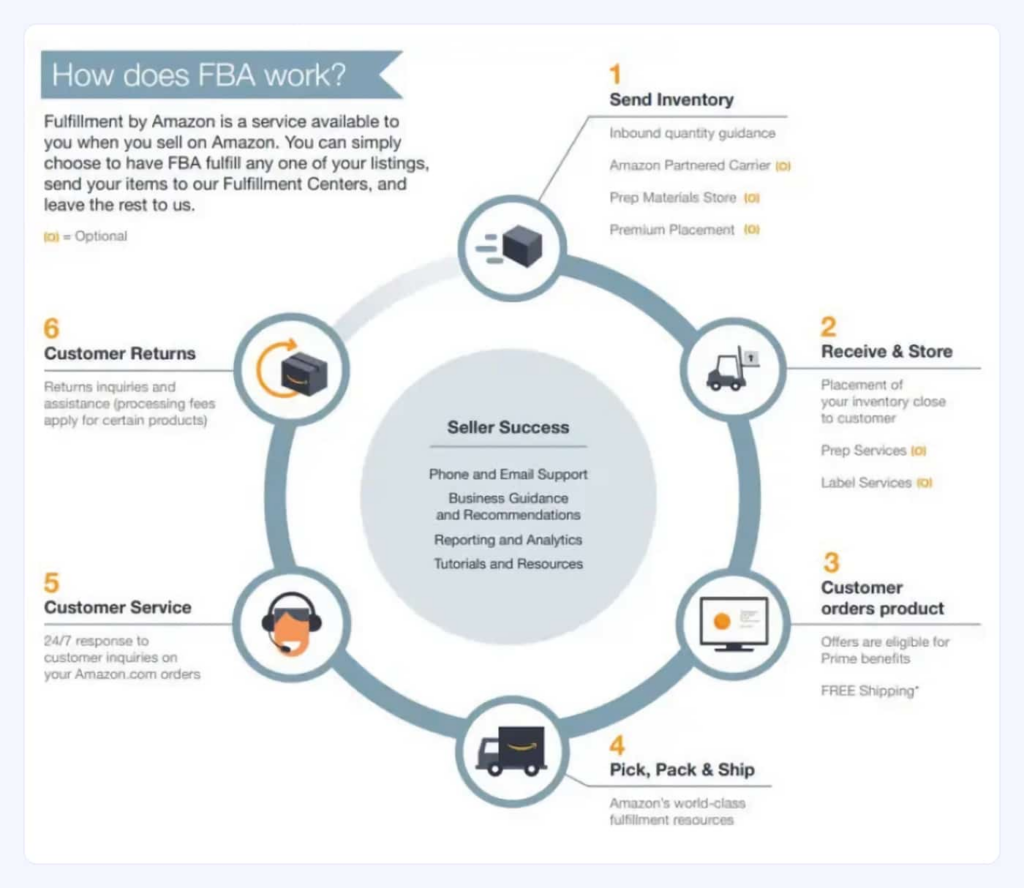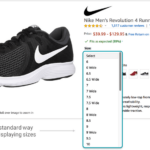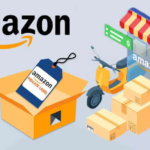In the fiercely competitive realm of e-commerce, the quest for optimal shipping cost management is paramount for Amazon sellers seeking to enhance profitability. This comprehensive guide unveils actionable strategies and practical tips to reduce shipping costs on Amazon without compromising the quality of service. Navigating the intricacies of Amazon’s shipping framework is the first step toward achieving cost-effective shipping solutions that contribute to long-term success in the online marketplace.
In a digital landscape dominated by cost considerations, mastering the art of reducing shipping expenses is pivotal for Amazon sellers. By exploring innovative strategies and leveraging the diverse shipping options provided by Amazon. Sellers can uncover opportunities to minimize costs and gain a competitive edge in the dynamic e-commerce ecosystem.
Understanding Amazon’s shipping framework

To embark on the journey of reducing shipping costs, sellers must first grasp the nuances of Amazon’s multifaceted shipping framework. From Fulfillment by Amazon (FBA) to Seller Fulfilled Prime (SFP) and Merchant Fulfilled Network (MFN), each option comes with its unique cost structures and advantages. A strategic understanding of these frameworks is essential for making informed decisions that align with the specific needs and goals of the business.
Delve into the distinct features and cost implications of FBA, SFP, and MFN to pinpoint the most fitting fulfillment option for your products. Whether opting for Amazon’s fulfillment services or managing shipping independently, a tailored approach to Amazon’s shipping framework sets the stage for effective cost management and streamlined operations.
Optimizing packaging to reduce shipping costs on Amazon

Efficient packaging not only safeguards products but is also a cornerstone for reducing shipping costs. Lightweight and compact packaging options, such as poly mailers for smaller items, can significantly impact shipping expenses. Delve into the eco-friendly benefits of Amazon’s Frustration Free Packaging program, exploring ways to align packaging practices with both cost efficiency and sustainability.
Discover the power of strategic packaging practices that balance protection with cost efficiency. Uncover the potential of right-sized boxes, explore environmentally friendly materials, and learn how to optimize packaging weight. As the first line of defense against rising shipping costs, strategic packaging choices contribute to both customer satisfaction and the financial health of the business.
Strategic inventory placement to reduce shipping costs on Amazon

Strategic inventory placement within Amazon’s FBA network can be a game-changer for reducing shipping expenses. Distributing inventory across fulfillment centers strategically helps minimize shipping distances, thereby cutting down on transportation costs. Dive into the nuances of Amazon’s Inventory Placement Service, exploring how it can be wielded to consolidate shipments and achieve cost-effective inventory management.
Unlock the potential of Amazon’s FBA network by strategically distributing inventory across fulfillment centers. Harness the benefits of Inventory Placement Service to direct units to specific locations, capitalizing on economies of scale. By understanding the geographical patterns of customer orders, sellers can refine inventory placement strategies and achieve a delicate balance between customer satisfaction and cost savings.
Negotiating carrier rates to reduce shipping costs on Amazon

Building strong relationships with shipping carriers can pave the way for substantial cost savings. Sellers are encouraged to research and compare rates from various carriers, including UPS, FedEx, and USPS. Armed with this information, negotiating volume-based discounts or special rates based on shipping patterns becomes a strategic endeavor.
Navigate the complex landscape of carrier negotiations by building strategic partnerships. Understand the intricacies of shipping rates, explore volume based discounts, and establish mutually beneficial agreements with carriers. By forging strong alliances with shipping partners, sellers can gain access to favorable terms, contributing to long-term cost efficiency.
Utilizing Shipping Software and Tools

Investing in cutting-edge shipping software and tools is a pivotal step toward cost-effective shipping management. Platforms like ShipStation, Shippo, or Easyship offer features such as rate comparisons, label printing, and order tracking. Embrace the automation capabilities of these tools to streamline operations, reduce errors, and enhance overall efficiency.
Discover the transformative power of shipping software and tools in automating key aspects of the shipping process. From rate comparisons to label printing, leverage automation features to reduce human errors and enhance overall efficiency. By embracing technology-driven solutions, sellers can not only optimize shipping costs but also position themselves as streamlined and competitive players in the e-commerce landscape.
Implementing zone skipping to reduce shipping costs on Amazon

Zone skipping emerges as a strategic approach for minimizing shipping expenses, especially for larger shipments. This involves bypassing certain shipping zones to reduce transit costs. Delve into the logistics of consolidating shipments and sending them directly to distribution centers near the final destination. Zone skipping offers a nuanced solution to navigate the complexities of shipping on Amazon.
Uncover the cost-saving potential of zone skipping by optimizing shipping routes. Explore ways to consolidate shipments and streamline the transportation process, minimizing transit costs. By strategically navigating shipping zones, sellers can achieve significant cost savings and enhance the overall efficiency of their supply chain.
Leveraging Multi-Channel Fulfillment

For sellers operating across diverse platforms, Amazon’s Multi-Channel Fulfillment (MCF) service offers a gateway to streamlined shipping solutions. This integration enables sellers to fulfill orders from other sales channels using Amazon’s FBA network. Dive into the intricacies of MCF, exploring how it can contribute to economies of scale and reduced overall shipping costs.
Unlock the potential of Multi-Channel Fulfillment to broaden the fulfillment reach beyond Amazon. Explore how MCF enables efficient order fulfillment from other sales channels, contributing to overall cost efficiency. By seamlessly integrating multi-channel fulfillment strategies, sellers can achieve a unified approach to shipping, reducing complexities and enhancing cost-effectiveness.
Monitoring and Analyzing Shipping Data

Regular monitoring and analysis of shipping data are indispensable for optimizing costs and identifying patterns. Utilize Amazon’s reporting tools and analytics to track shipping expenses, delivery times, and carrier performance. Uncover the insights derived from shipping data to make informed decisions, refine shipping strategies, and continuously enhance cost efficiency.
Empower decision-making with the insights derived from shipping data analytics. Dive into Amazon’s reporting tools to track shipping expenses, analyze delivery times, and evaluate carrier performance. By harnessing the power of shipping data, sellers can make informed decisions, optimize shipping strategies, and achieve a proactive approach to cost management.
Implementing Shipping Promotions Strategically

Strategic implementation of shipping promotions is a powerful tool for influencing buyer behavior while managing costs effectively. Explore options such as offering free shipping on orders above a specific value or implementing tiered shipping discounts. Uncover the potential of shipping promotions to incentivize larger orders, offsetting shipping costs through increased order values.
Unlock the potential of strategic shipping promotions to shape buyer behavior on the Amazon platform. Explore the benefits of free shipping thresholds and tiered shipping discounts to incentivize larger orders. By strategically influencing buyer behavior, sellers can strike a balance between customer satisfaction and cost-effective shipping practices.
Exploring Hybrid Shipping Models
Hybrid shipping models offer a flexible approach that combines elements of FBA and MFN. Sellers can fulfill some products through FBA while managing others in-house. Dive into the benefits of hybrid models, which provide a balance between the convenience of FBA and the control over shipping costs inherent in MFN. Experiment with hybrid strategies to assess the most cost-effective approach for the specific product mix.
Discover the versatility of hybrid shipping models that blend the advantages of FBA and MFN. Explore how this approach allows sellers to optimize costs while maintaining control over specific aspects of the shipping process. By experimenting with hybrid models, sellers can achieve a delicate balance that aligns with their unique business needs and product offerings.
Conclusion
In the ever-evolving landscape of Amazon, mastering the art of reducing shipping costs is a continuous journey that demands adaptability and strategic acumen. By understanding Amazon’s shipping framework, optimizing packaging practices, strategically placing inventory, negotiating carrier rates, leveraging shipping software, implementing zone skipping, utilizing Multi-Channel Fulfillment, monitoring shipping data, offering strategic promotions, and exploring hybrid models, sellers can navigate the complexities of shipping on Amazon while enhancing profitability.
As the e-commerce landscape continues to evolve, staying informed about new features, services, and cost-saving opportunities on Amazon is essential. By incorporating these strategies and remaining proactive in adapting to changes, sellers can not only reduce shipping costs but also create a competitive advantage in the dynamic marketplace.















